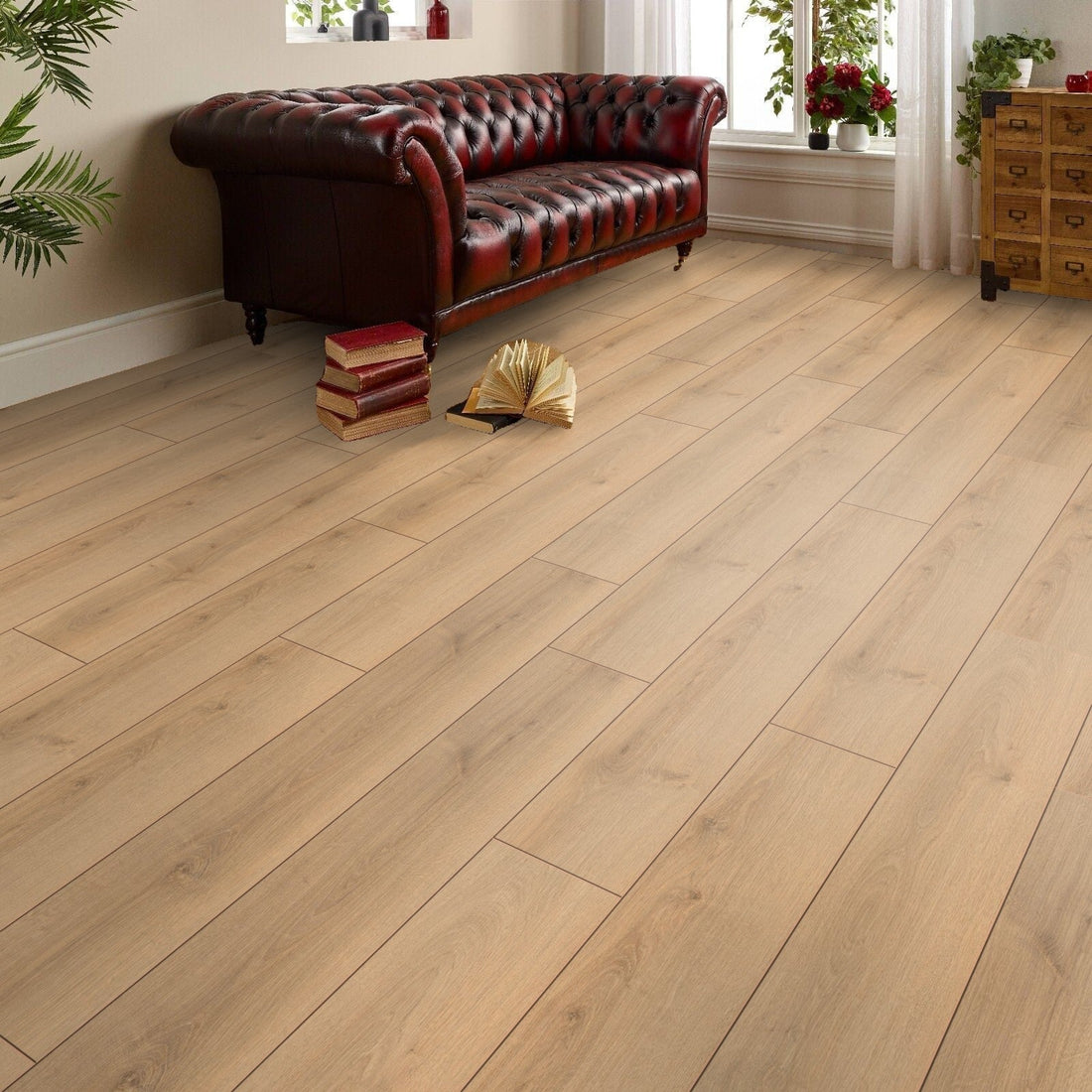When you’re a landlord, the flooring you choose can directly affect the profitability of your property. The wrong material can mean replacing floors between every few tenancies, while the right choice will stay looking fresh, handle tenant turnover with ease, and minimise long-term maintenance costs.
Whether you own a single flat or manage a portfolio, the winning formula comes down to three essentials: durability, cost-effectiveness, and tenant appeal. This guide explores the best flooring options for landlords, where each type works best, and tips for maximising the lifespan of your investment.
Why Flooring Choice Matters for Landlords
The flooring in your rental plays a much bigger role than many landlords realise. It impacts tenant appeal, ongoing maintenance costs, and the property’s overall value.
Stylish flooring makes listings more attractive in online photos and viewings, helping your property stand out in a competitive market. Durable flooring reduces calls for repairs and replacements, saving you time and money between tenancies. And when it comes to long-term investment, quality flooring can add value to your property, giving you a stronger resale position in the future.
Laminate Flooring – Affordable and Durable
Laminate flooring is one of the most popular choices for landlords because it mimics the look of hardwood or tile at a fraction of the cost. It is scratch and stain resistant, quick to install, and available in a wide range of styles to match almost any interior.
Laminate works particularly well in living rooms, dining areas, and bedrooms. A practical landlord tip is to choose mid-tone finishes, as they hide scuffs and everyday dirt better than very light or dark shades. This ensures the flooring looks fresher for longer, even in high-turnover rentals.
Luxury Vinyl Tile – Style Meets Practicality
Luxury Vinyl Tile (LVT) is a smart option for landlords who want the look of wood or stone with built-in water resistance. It is especially suited to kitchens, bathrooms, and hallways, where moisture and spills are common.
Tenants appreciate that LVT is comfortable underfoot, resistant to dents and scratches, and easy to clean. For landlords, one of the biggest benefits is that damaged sections can be replaced without redoing the entire floor. Choosing neutral designs is recommended, as they work with a variety of décor styles and appeal to a wider tenant base.
Real Wood Flooring – Premium Appeal
For high-end rentals, real wood flooring can be a significant selling point. It brings timeless character and elegance, which can help justify higher rents and attract long-term tenants who value premium finishes.
However, landlords should note that real wood requires more care than other flooring options. It may need refinishing over time and is more vulnerable to scratches and water damage if not properly maintained. Real wood works best in premium living areas or bedrooms where tenant turnover is low, ensuring landlords get the most from their investment.
Herringbone and Parquet Flooring – Standout Design
For properties that need a design edge, herringbone and parquet flooring can transform an interior. These patterns create a sense of luxury and sophistication, making them perfect for entrance halls, lounges, or feature areas.
Available in wood, laminate, and vinyl finishes, herringbone and parquet offer landlords flexibility in balancing style with durability. Because these patterns look distinctive in property photos, they can also help rental listings stand out online and attract more viewings.
Waterproof Flooring – Peace of Mind
Moisture-heavy rooms like bathrooms, utility areas, and basements benefit most from waterproof flooring. Completely impervious to spills, these floors eliminate worries about water damage and are simple for tenants to clean.
With modern designs that mimic wood and stone, waterproof flooring combines practicality with style. For landlords, this means fewer repairs, lower maintenance costs, and greater peace of mind.
Maintenance Tips for Longevity
The right flooring can easily last 10 to 15 years with proper care, but landlords can extend this lifespan further with a few simple steps. Providing tenants with a short care guide tailored to the installed flooring type reduces the risk of damage. Adding felt pads under furniture legs protects against scratches, and scheduling a professional clean between tenancies helps restore floors to their best condition before new tenants move in.
Frequently Asked Questions
Should landlords use the same flooring throughout a rental?
While a consistent look can feel cohesive, mixing flooring types by room is often more cost-efficient and ensures maximum durability in high-use areas.
Is hardwood worth it for a rental property?
In most cases, no. Unless you are targeting the premium rental market, laminate or LVT will provide better value, easier maintenance, and longer lifespan.
How often should rental flooring be replaced?
Laminate and LVT can last over a decade with proper care, while carpet tiles generally need replacing every five to seven years.
Conclusion – The Best Flooring Choices for Rentals
The best flooring for a rental property depends on your budget, target tenant, and property type. For most landlords, a combination of laminate, luxury vinyl tile, and waterproof flooring will provide the best balance of cost, durability, and style. In premium rentals, real wood or herringbone designs can be used selectively to create a standout look that attracts long-term tenants.
If you are planning an upgrade for your rental property, explore the Sale section at UK Flooring Depot to find great deals on landlord-approved flooring options. Investing wisely now will reduce future maintenance costs, increase tenant appeal, and protect your property for years to come.





